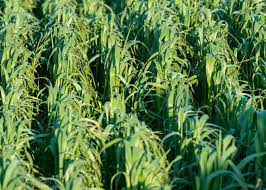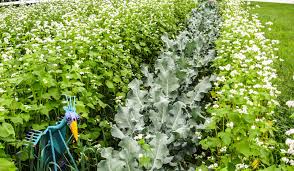As the growing season ends, parts of my garden start to look bare after crops are cleared. Without protection, the soil becomes vulnerable to winter rains, snow, and strong winds, which can wash away nutrients and erode the topsoil. To prevent this, sowing cover crops, also known as green manures, is an effective solution. These crops not only protect the soil over winter but also suppress weeds and provide habitats for beneficial insects like ground beetles and frogs, which help control pests.
Cover crops, when incorporated into the soil at the start of the growing season, improve soil fertility and structure, giving the garden a fresh boost. The right choice of cover crop can ensure your soil remains healthy and ready for the next season’s plants.
Best Cover Crop Options for Cold Climates
In colder regions, like northern Europe, the options for overwintering cover crops are more limited. However, three main types are suitable for winter cover:
- Legumes (e.g., winter field beans, forage peas, and vetch)
- Mustard (a member of the cabbage family)
- Cereal Rye (Secale cereale)
In milder climates, gardeners can also use phacelia and clovers. Each cover crop offers unique benefits, so knowing which to plant after harvesting your crops can make a significant difference in soil health.

Benefits of Cover Crops
Legumes like field beans and vetch fix nitrogen from the air and release it into the soil when they’re turned under. This makes them ideal for boosting soil nitrogen, especially for crops like brassicas. However, legumes are most effective when soil temperatures are above 8°C (46°F), so they may be less efficient in colder winters.
Mustard is excellent at suppressing weeds due to its fast growth and dense canopy. Additionally, certain varieties like ‘Caliente’ act as biofumigants, which may help control pests such as wireworms and potato eelworm. Mustard is not frost-tolerant, so it typically dies off after a hard frost, making it easy to incorporate into the soil come spring. Avoid mustard after brassicas suffering from clubroot, as it may harbor the disease.

Cereal Rye is a hardy and versatile cover crop. It grows quickly and forms a dense canopy that suppresses weeds. Its fibrous root system helps improve soil structure and retains nitrogen, which is gradually released for the next crop. Cereal rye can be sown later than other cover crops, making it ideal for late-season planting. Be cautious not to let it grow too long, as it can become tough to dig in. Allow four to six weeks after digging in before sowing seeds, as cover crops like rye may produce chemicals that inhibit seed germination.
Crop Rotation and Cover Crops
A well-planned crop rotation can work in harmony with cover crops. For example, after harvesting legumes (peas or beans), you can sow legumes like field beans or vetch to replenish nitrogen. Brassicas (e.g., cabbage) benefit from mustard, cereal rye, phacelia, or legumes, while solanaceae (e.g., tomatoes) and cucurbits (e.g., squash) do well with cereal rye or phacelia.
Here’s a sample crop rotation guide for overwintering cover crops:
| Edible Crop | Follow-on Green Manure |
|---|---|
| Legumes (peas, beans) | Legumes (field beans, forage peas, vetch) |
| Brassicas (cabbage family) | Mustard, cereal rye, phacelia, legumes |
| Solanaceae (tomato, potato) | Cereal rye, phacelia |
| Umbellifers (carrot, root) | Cereal rye, phacelia, legumes |
| Cucurbits (squash, melon) | Cereal rye, phacelia, legumes |
| Chenopodiaceae (beet family) | Cereal rye, phacelia, legumes |
This schedule is just a guide, so feel free to experiment and adapt to what works best in your garden.
Final Thoughts
Incorporating overwintering cover crops into your crop rotation plan not only protects your soil but also enhances its health for the next growing season. Whether you choose legumes, mustard, or cereal rye, each cover crop plays a vital role in maintaining soil fertility, suppressing weeds, and encouraging beneficial wildlife. Try different combinations, and discover what works best for your unique garden environment.
